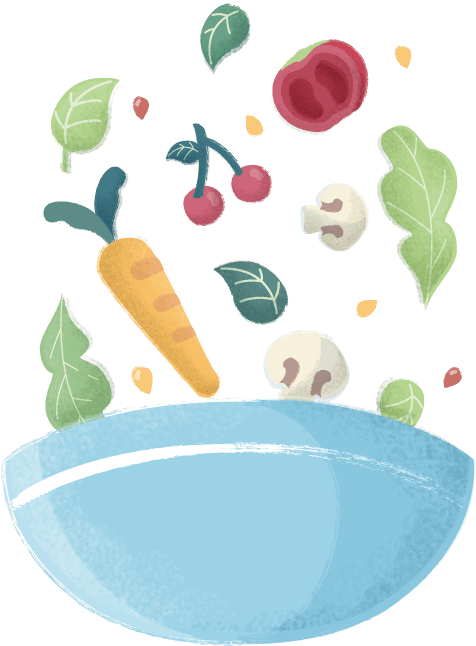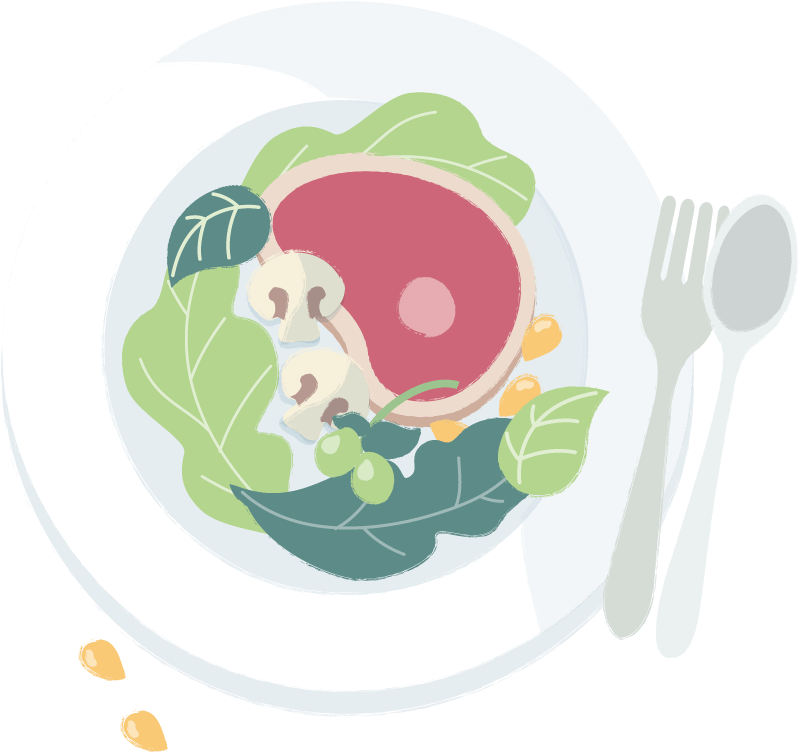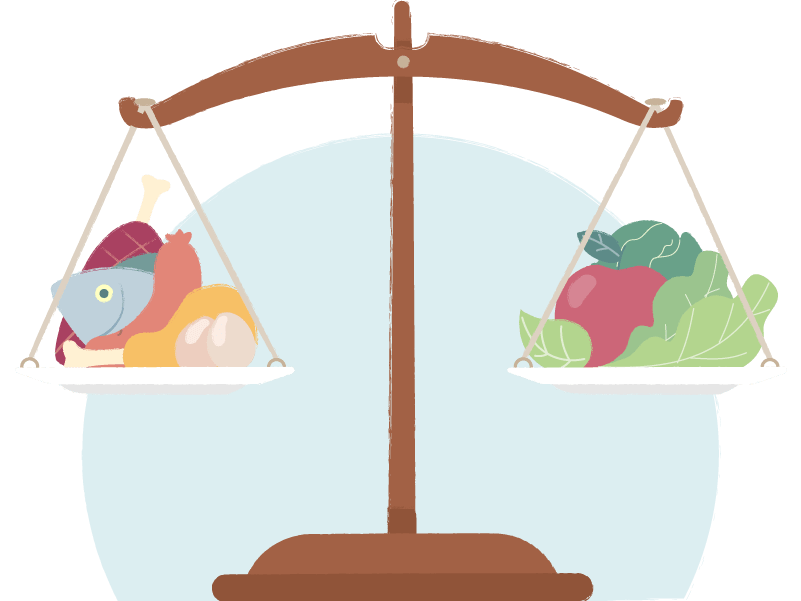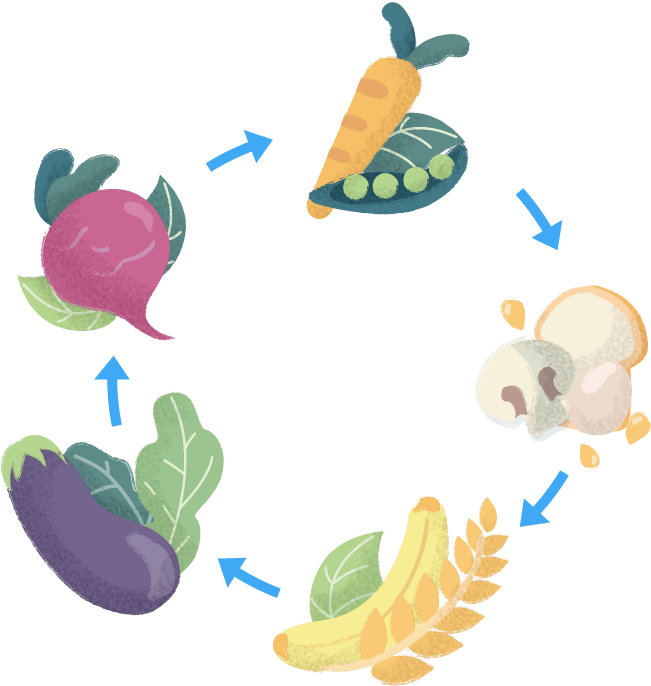Biodynamic agriculture
BIODYNAMICS IS A FORM OF AGRICULTURE THAT TRANSCENDS CROP CULTIVATION WITHOUT PESTICIDES.
IT IS CONNECTED WITH INNER GROWTH, AND IS IN THE SERVICE OF THE EARTH AND MANKIND
The term ‘biodynamics’ comes from the Greek words ‘BIOS’, meaning life, and ‘DYNAMIS’, meaning energy.
Biodynamics is a holistic, ecological, and ethical approach to farming, gardening, food, and nutrition, with vitality as the highest priority. Biodynamics has been practised for nearly a decade on all continents. The biodynamic principles and practices are based on the spiritual insights and practical suggestions of Dr Rudolf Steiner. They were developed through cooperation between numerous farmers, researchers and scientists in the early 1920s. In particular, Steiner encouraged farmers to develop a personal relationship with plans, animals, the soil, even manure, so that they could think about agriculture holistically.
Nowadays, the biodynamic movement includes thousands of regenerative gardens, farms, ranches, orchards and vineyards in a wide range of climates, environmental contexts and economic conditions on all continents.

History of biodynamic agriculture?
In 1924, a group of European farmers approached Dr Rudolf Steiner after they noticed a sudden drop in the seed fertility, crop vitality and animal health. In response, Steiner held a series of lectures in which he presented farms as living organisms: each independent and self-sustainable, responsible for the creation and maintenance of its own health and the vitality of individuals. This was in stark contrast with the perception of farms as factories that pride themselves in the use chemical pesticides and synthetic fertilisers, which was, to a large extent, responsible for the reduced vitality observed by the farmers who sought Steiner’s guidance. He presented his working methods and principles at the so called Agricultural Course in 1924, where he declared biodynamic formulations as crucial for such type of cultivation/production.
The ideal of biodynamic cultivation is circular economy: a farmer keeps as many animals as he can feed on his land. Their manure ensures high soil fertility, resulting in the best human food. With the aid of biodynamic formulations, the farmer controls natural processes. It turns a farm into a a single organism (German ‘organismus’), in which each organ depends on another: the people, plants animals and soil all work together.
Today, almost 100 years after Steiner’s Agricultural Course, thousands of farms in more than 60 countries across the world produce food in line with the biodynamic principles under the Demeter standard. Demeter is the largest supplier of certified organic (biodynamic) products in the world.
In the early 1920s, agriculture faced clearly visible changes. The increasing impact of technology and science as well as earning profit became the dominant paradigm in food production. Already from the middle of the 18th century, agriculture in England was done from a one-sided economic perspective. In 1810, Albrecht von Thaer declared agriculture a branch of the economy that operates exclusively for profit. That view became more dominant in the 19th century, gradually leading to a lack of distinction between agricultural production and food industry. Numerous farmers faced such development with a great worry and an even greater doubt.

What novelties does Dr Rudolf Steiner’s Agricultural Course bring?
The Course laid the foundation of biodynamic agriculture, the oldest and most comprehensive course of organic farming, which would later spread across the entire world.
In the report, already prepared during the conference, written for the Anthroposophic Society journal, Steiner himself wrote notes on the aims of the lecture:
“In my lecture, I included the method of producing agricultural products and the conditions in which they are produced. In our discussions, we should come to practical conclusions that can also illuminate certain issues spiritually. So that all those practical conclusions can be compared with today’s scientific research.“
The lectures are not the customary textbook on agriculture, but they open up new ways of understanding the whole that result in agricultural products. That which later developed under the name ‘biodynamics’ after the Agricultural Course lectures basically consists of three dimensions:
– the conditions in which agricultural products are produced;
– the concrete measures described in the lectures;
– the elements of continuous environmentally acceptable food production that cherishes the human body as well as the soul and spirit.
Even if the concept of organic agriculture is not clearly defined, it primarily indicates a clear course of action. Secondly, in the concept of biodynamic agriculture, “production conditions” are infused with knowledge, with certain measures and preparations added.
In an impressively coherent composition, agriculture is presented in the context of terrestrial and cosmic forces. This basic motive, the central in the entire concept, permeates the entire lecture cycle. It represents a complete revolution in the mechanical and materialistic causal analysis of matter in agriculture. The obvious results in the modern agrobusiness rest on such methods. However, they are at the same time one of the main causes of the poor biological state of the soil.
Agriculture in harmony with the rhythms of cosmos

Nutritional principles
Nutrition affects the entire human being, i.e. the body, but also its vitality and psycho-spiritual state of mind. That is why Rudolf Steiner has provided guidelines already in his earliest lectures some 100 years ago on suitable nutrition. With the appearance of biodynamic agriculture, that awareness spread not only to the choice of foodstuffs such as cereals or potatoes, but also the standard and method of their cultivation. Producing food in accordance with the biodynamic principles is not only good for the regeneration and maintenance of the soil. It is also important that products produced using the biodynamic methods are better and richer in terms of nutrition and quality.

Food quality
The standards that determine the quality of nutrition in its anthroposophic sense are significantly wider and more comprehensive than those accepted today as scientific. Not only ingredients are considered important and relevant, but also the natural and human influences that determined the cultivation and processing methods. Those are mostly life energies of plants and animals as well as the conditions standardised in the various stages of preparation for sale to the consumer. Those forces have an active impact on a human because they stimulate digestion and the metabolism, i.e. the central processes of life in a human system. The manner in which those forces act varies depending on the type of food and method of cultivation. Plants gain various inner forces depending on how they live, the environment and the care they receive from humans. Animals are similar – the conditions in which they are kept, whether they can move freely and whether they can have contact with one other are all important. All of the above has various impacts on people who consume them as food.

Biological quality
(plant or animal species)
Cultivation quality
Processing quality
Cooking or preparation quality
This expanded view of the standards leads to a different judgement and understanding of the appropriateness and effects of our foodstuffs. It is the above items which, among other things, are described in various guidelines set out in international biodynamic standards by Demeter.
https://www.demeter.net/
https://www.biodynamics.com/
In the course of the lecture cycle at the Agricultural Course, Rudolf Steiner also drew this picture

